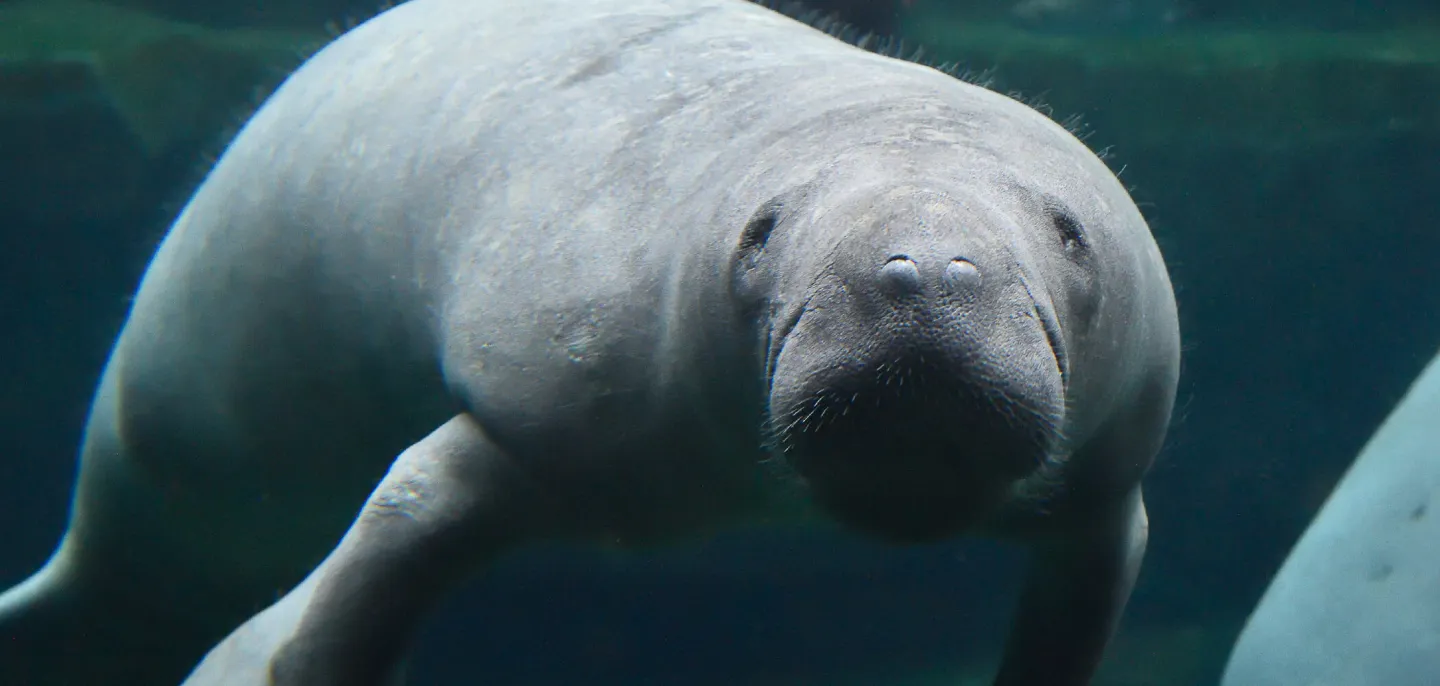
Mammal
The manatee
Trichechus manatus manatus
The manatee, Trichechus manatus manatus, also often called the "sea cow", is a mammal which lives in the coastal areas and rivers of South America.
Distinctive features
Its Latin name Trichechus comes from the hairs that cover its body and snout. These are sensory hairs that measure vibrations in the water.
The manatee is also characterised by the development of its upper lip, which is a real gripping organ.
The manatee: an endangered species
Manatees are threatened by fatal injuries caused by propellers, nets and other fishing gear, the discharge of pollutants into the water and the proliferation of toxic algae. These environmental and human causes are compounded by late sexual maturity and a very long gestation period: around 12 months for a single calf.
Une histoire évolutive éléphantesque
47 millions d’années : c’est l’âge des plus anciens fossiles de Siréniens ! À cette période (que l’on appelle l’Éocène), ces mammifères vivaient principalement le long des côtes, fleuves et estuaires d’Afrique du Nord. Et, alors qu’ils sont aujourd’hui strictement aquatiques, ils possédaient à l’époque quatre membres et pouvaient marcher sur terre. Pas étonnant lorsque l’on sait que leurs plus proches parents vivants sont aujourd’hui… les éléphants !
Ce n’est qu’il y a 34 millions d’années (à la fin de l’Éocène) qu’une dispersion transatlantique en direction du sud de l’Amérique du Nord et des Caraïbes a eu lieu, donnant également naissance à l’ancêtre commun des Siréniens actuels. De nombreuses espèces ont vu le jour, cohabitant parfois au sein de larges communautés d’individus ! Parmi les espèces issues de cette dispersion, la rhytine de Steller (Hydrodamalis gigas), un Sirénien qui vivait dans la mer de Béring, pesait près de 11 tonnes pour 8 mètres de long ! Malheureusement, la chasse intensive a conduit à l’extinction de ce mammifère… seulement 27 ans après sa découverte en 1741.
Aujourd’hui, seules quatre espèces de Siréniens subsistent : trois espèces de lamantins (Trichechus manatus, Trichechus senegalensis et Trichechus inunguis) et une espèce de dugong (Dugong dugon).
Le saviez-vous ?
Les lamantins sont souvent confondus avec les dugongs, des mammifères marins appartenant eux-aussi à l’ordre des Siréniens. Mais, contrairement au lamantin, le dugong est exclusivement marin. De plus, il possède une nageoire caudale triangulaire qui se distingue de celle des lamantins, de forme arrondie.
Des lamantins particulièrement vulnérables
Si le lamantin des Antilles est une sous-espèce peu connue du grand public, c’est en partie à cause de sa disparition progressive de son aire de distribution historique au cours des derniers siècles : alors que son habitat s’étend du sud-est des État-Unis à la région nord-est du Brésil, il existe un véritable trou dans sa distribution, particulièrement localisé aux Petites Antilles. La cause ? Le développement de l’activité humaine entraînant une augmentation du flux maritime, de la pêche, la détérioration de la qualité de l’eau ou encore la destruction des herbiers marins.
Alors que l’espèce est classée vulnérable dans la liste rouge mondiale de l'Union Internationale pour la Conservation de la Nature (UICN), la sous-espèce du lamantin des Antilles ne compte désormais plus que quelques milliers d’individus dans la nature !
C’est pourquoi elle fait partie d’un plan d’élevage européen (EEP) associant plusieurs parcs zoologiques dont le Parc zoologique de Paris qui œuvre à l’amélioration des connaissances biologiques et méthodologiques de recensement des lamantins et à la réintroduction de la sous-espèce en Guadeloupe.
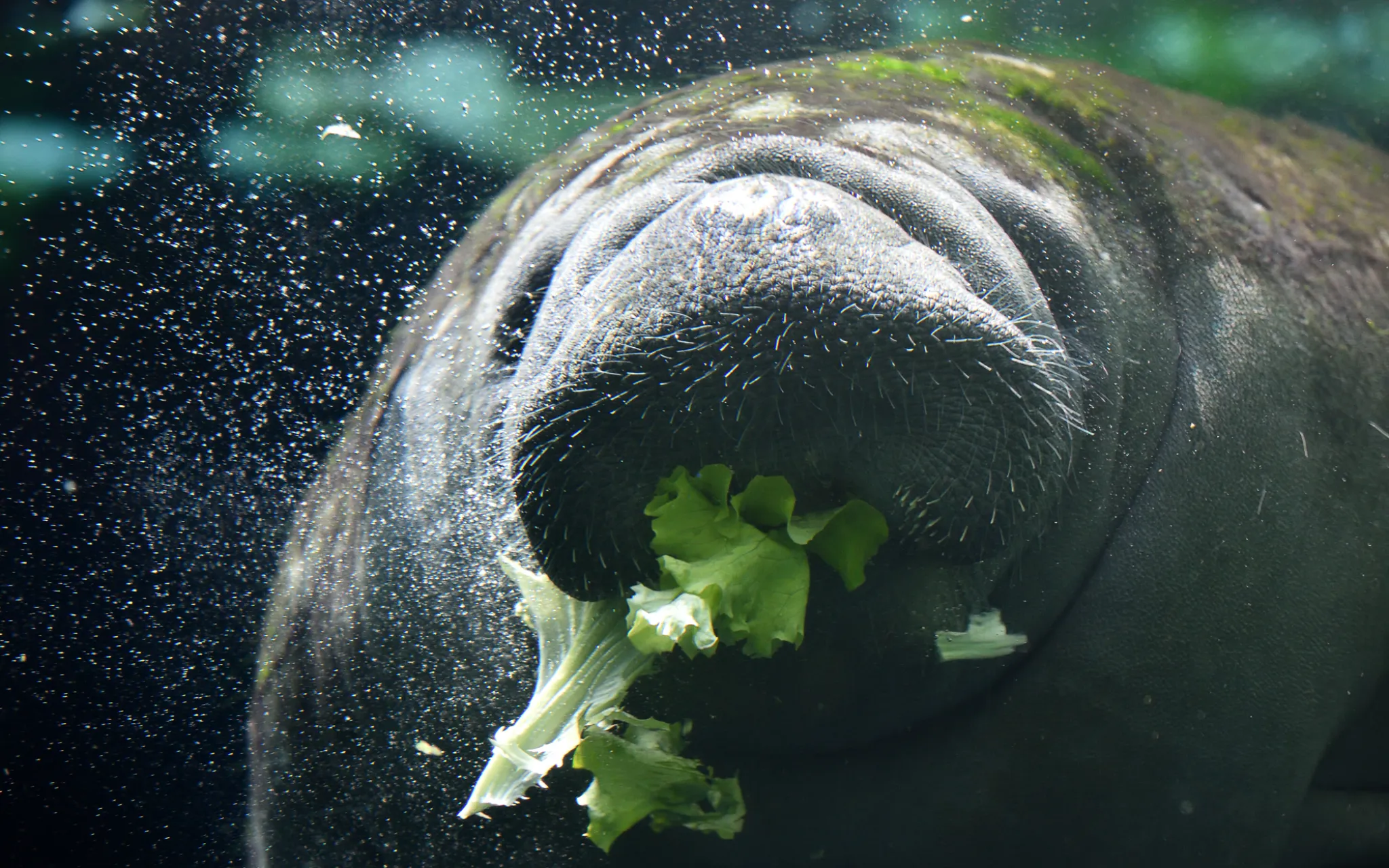
Nourrissage des lamantins au Parc zoologique de Paris
© MNHN - F.-G. Grandin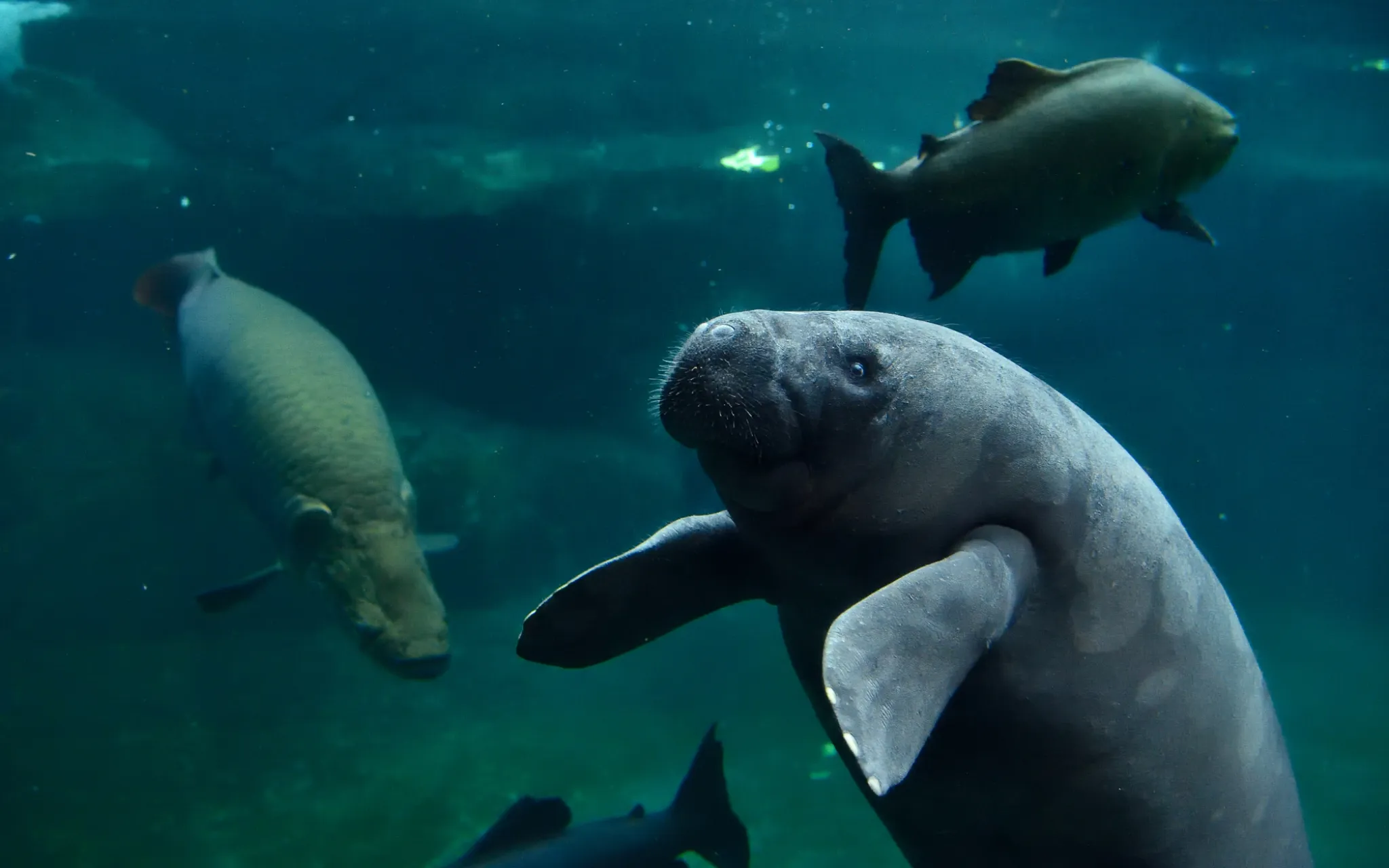
Kalina, femelle lamantin
© MNHN - F.-G. Grandin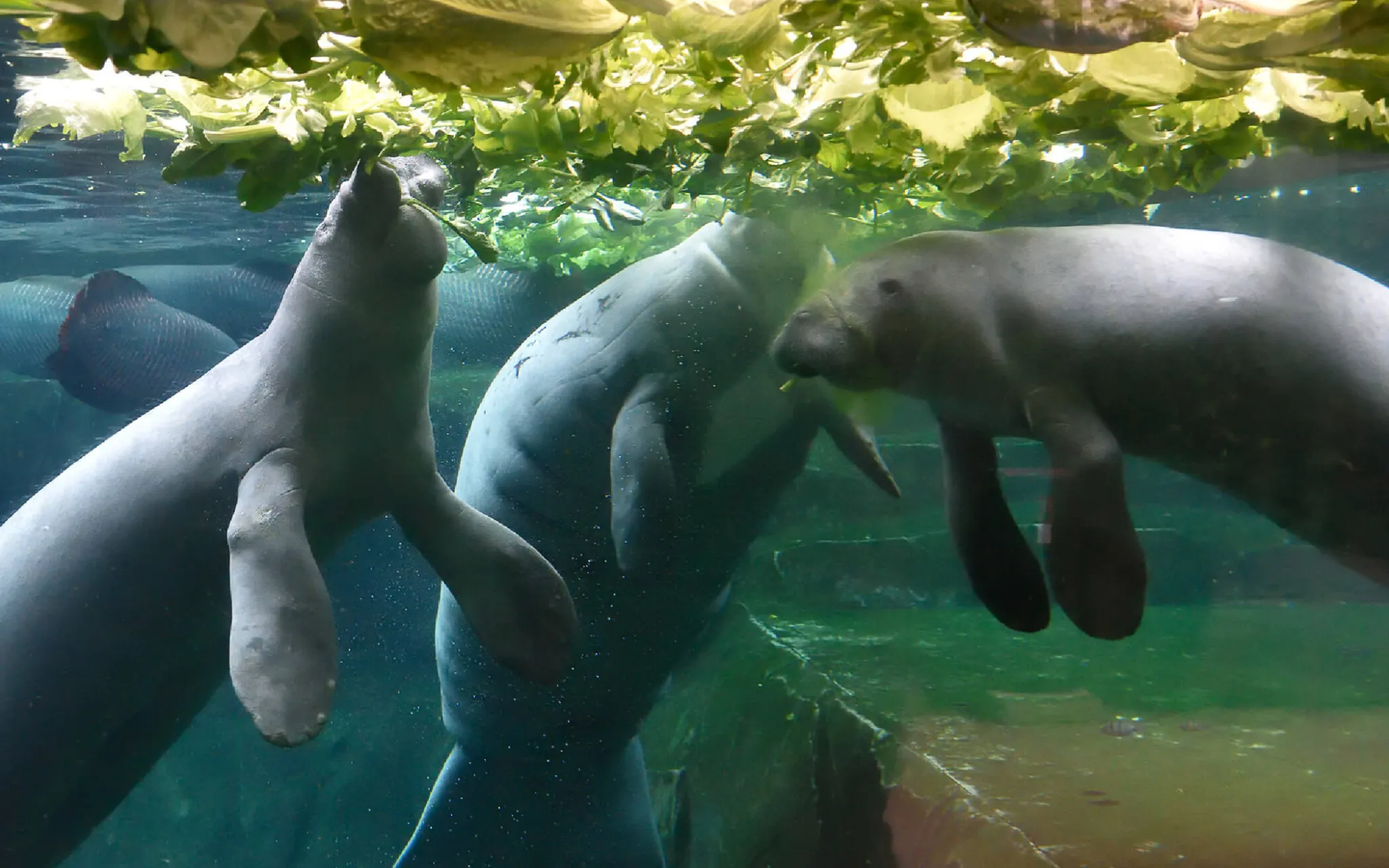
Lamantins
© MNHN - F.-G. Grandin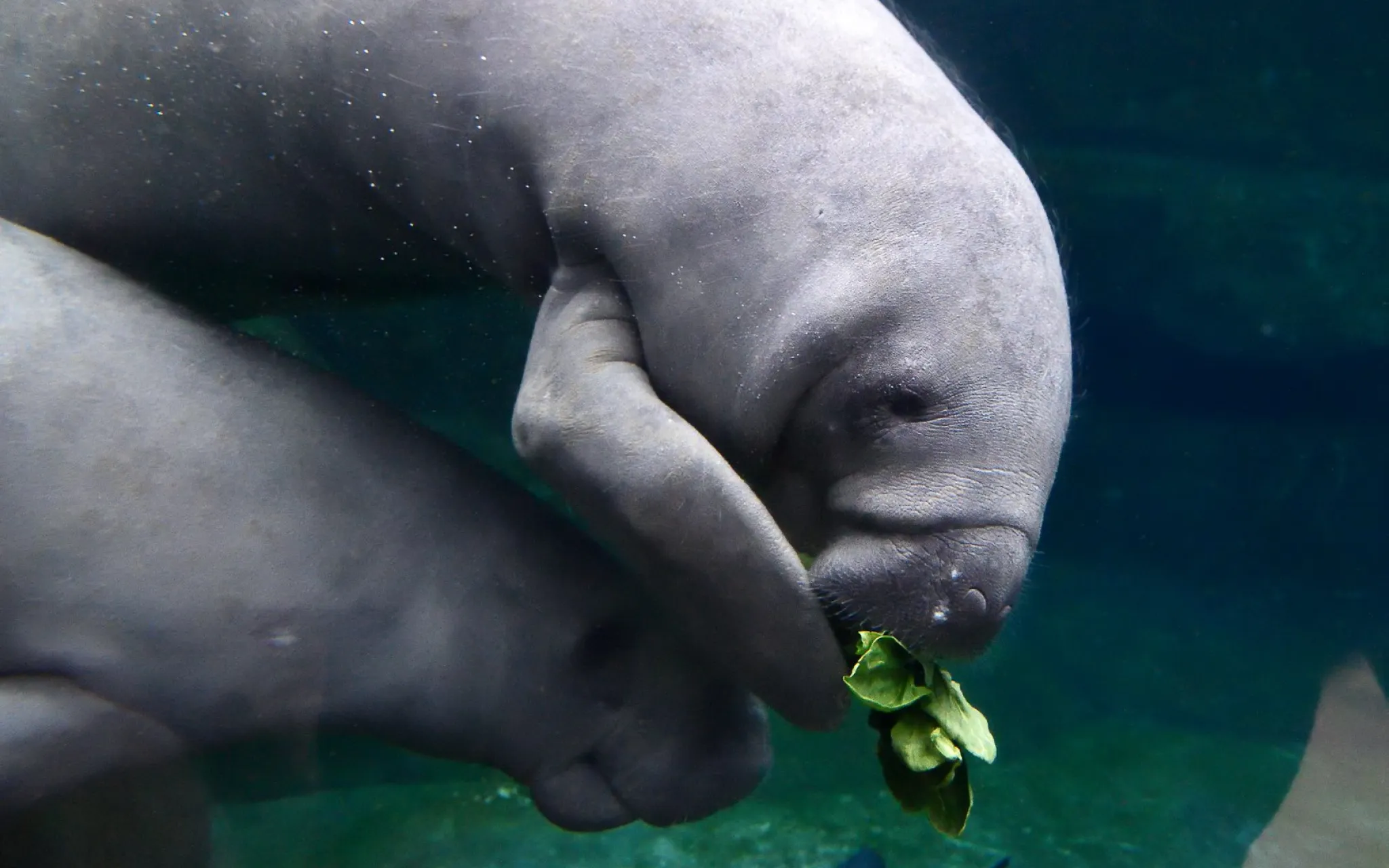
Herbert, le lamantin
© MNHN - F.-G. GrandinSponsor a species
By sponsoring a species from the Parc zoologique de Paris, you will support major conservation projects. Thanks to your donation, we will be able to improve the welfare of the animals, learn more about threatened species, and set up conservation initiatives in their natural environment. You will also have access to exclusive rewards!
I want to sponsor a species from the Parc zoologique de Paris
Relecture scientifique

Alexis Lécu
Directeur scientifique du Parc zoologique de Paris




